Brutalist Berkeley Art Museum Brutalist Berkeley Art Museum Wiki
March 16, 2022
The Berkeley Art Museum, a Modernist Landmark, is Reengineered and Redesigned
A team led by MBH Architects have shored upward the seismically vulnerable building and threaded in new labs and offices to create the new Bakar BioEnginuity Hub.
We let the building continue to express itself.
Ken Lidicker, MBH studio manager
The unique edifice originally took shape after noted Bay Area modernist Mario Ciampi (with three other architects) won a competition in 1965 to design a new edifice for the UC Berkeley Fine art Museum, which had recently received 45 works of art (and $250,000) from the painter Hans Hofmann. Finished in 1970, the museum, with its lath-formed concrete walls, spread out like a fan, with interior art galleries linked by cantilevered ramps. The fundamental atrium space was always the hub. Ciampi'southward genius was in creating a dynamic identify that mirrored much of contemporary art. His edifice showed that a very rational building could be experienced as chaotic, or, with time, as a circuitous organization of movement, light, and structure. Concrete could float. The result was what architects always hope for: the meeting of art and construction.
At the time of the opening, fine art and architecture critics responded favorably. Curators and some members of the public, not so much. Perhaps the biggest issue was the hulking building's seismic vulnerability. Despite earning a "very poor" seismic rating in the 1990s, the edifice had few cracks in its beautiful concrete. In 2001, Forell/Elsesser Engineers installed slender grey columns on the interior and large dark steel braced frames on the west and south outside. This improved the seismic rating to "poor." In 2011, UC Berkeley alumnus David Woo donated $14 million toward saving the building. (The university renamed the edifice Woo Hon Fai Hall in honor of his begetter.) His generosity did not guarantee preservation, but it did create awareness of the building'south value to other potential donors. The edifice was landmarked in 2014. The museum relocated to a new building (designed by Diller Scofidio + Renfro and EHDD) that opened in 2016. Several schemes had explored potential uses of the Ciampi structure, but none attracted the necessary donors.
That is until MBH Architects, working with structural engineers Forell/Elsesser, mechanical/electrical engineers PAE, preservation builder Page & Turnbull, and others, proposed threading a new plan of labs and offices into the edifice. Interior buckling restrained braced frames (BRBs) would significantly meliorate the building'south seismic rating. The plans helped concenter donations that led to the creation of the new bioengineering hub, which houses varied workspaces besides as moisture and dry, open up and private labs, where UC graduate students can share space with life science startups and established biotech companies.
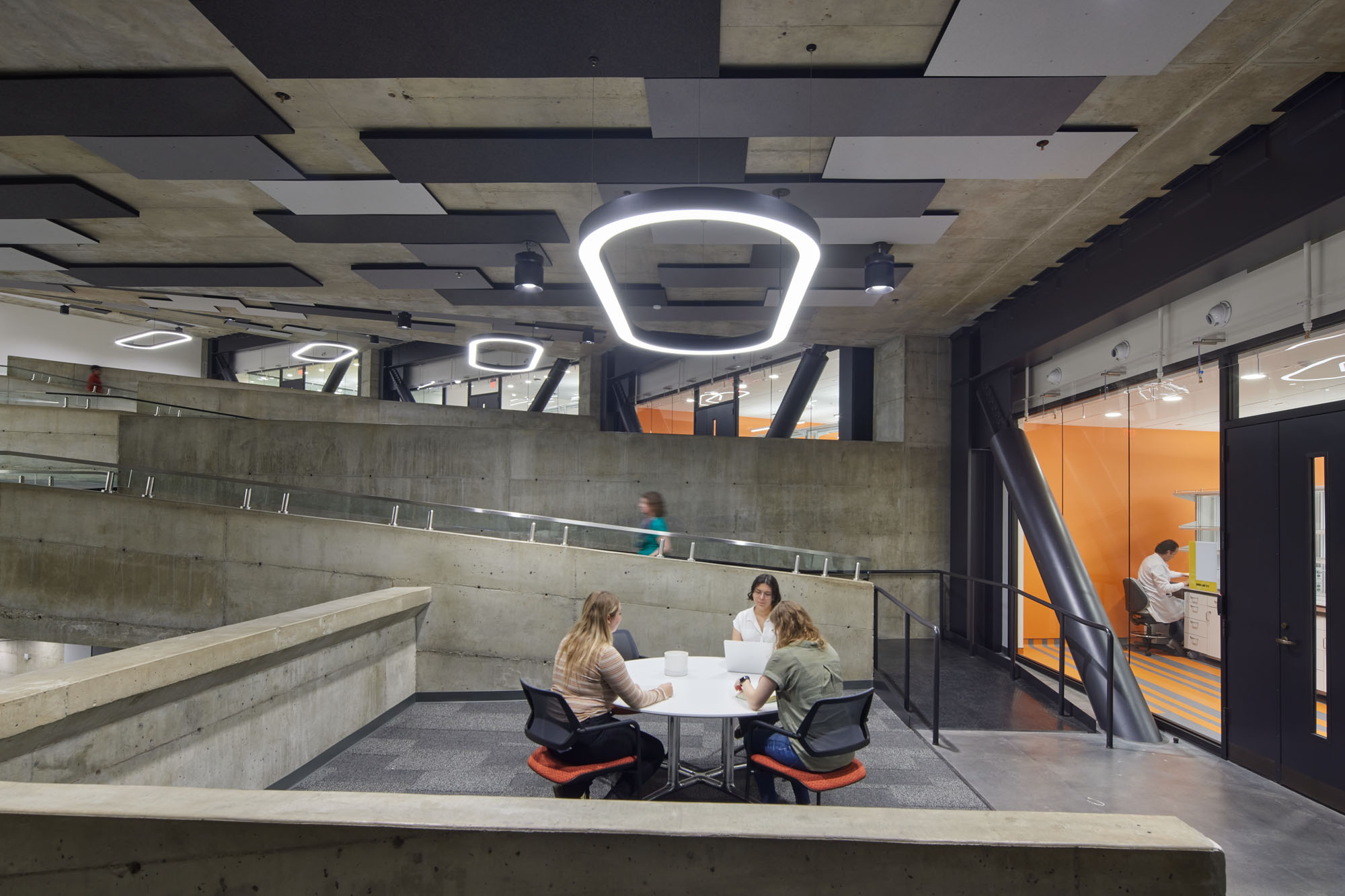
According to Masume Dana, senior associate at Forell/Elsesser, the new structural solution substantially reinforces Ciampi'due south original concept with some new enhancements. MBH studio director Ken Lidicker adds: "We identified four chief challenges that had to be solved for the project to succeed—preservation of the historic character, upgrading of structural operation and mechanical systems as well as access for the new use."
A modern lab's mechanical needs are much greater than an art museum'southward. Considering the thin concrete roof couldn't have additional loads and was a part of the building's grapheme, the squad looked to empty spaces in the structural physical "trees" that assist concur up each ramp, as well every bit to spaces within the floor structure. Additional interstitial space was institute in the alpine volumes of the galleries that were converted to labs. The surface area of the galleries where the ramps come across and overlook the atrium became collaboration zones. The building'due south varied skylights, which had once played havoc with delicate artwork (they were replaced in 1994 using translucent sandwich panels) once again consist of articulate glazing, resulting in an ethereal, virtually-spiritual calorie-free quality like to when the building first opened.
The team determined that half-dozen,600 square feet of additional office space was needed. In response, MBH designed a simple, modernistic, yet contrasting book that resembles a glass and steel drawer emerging from a concrete cabinet and uses concrete walls that extend the edifice's radii into its garden. Filling in part of the garden with offices and making the residual of it individual somewhat compromises the original site character. (And views to the garden were somewhat compromised past the necessary BRBs.) But this was mitigated past adding a landscaped surface area to the northwest corner of the site and adding a through-block pedestrian path (designed past Jett Landscape Compages + Design).
Although Ciampi's vision aspired to permanence, the museum'due south utilize lasted less than 50 years. The power to analyze and meliorate building technology performance has changed dramatically since 1970. This immune the building to evolve and firm future generations every bit they change the time to come of bioengineering. In this instance, information technology's a win/win: scientific enquiry has a new, powerful infinite, and an original architectural vision endures. As MBH Principal Lidicker said, "We permit the building go along to express itself."
- Bakar BioEnginuity Hub
- Berkeley
- Kenneth Caldwell
- Architecture
Related
-

Projects
In the Toronto Suburbs, Affordable Senior Housing is Overhauled to See the Highest Efficiency Standards
Through a combination of advocacy and pattern, ERA Architects is helping build a move to rehabilitate and green the city's affordable housing stock.
-

Projects
Esch 2022 Celebrates One of Europe's Most Stunning Industrial Turnarounds
With Esch2022, Luxembourg's 2nd urban center reveals its metamorphosis from a decaying manufacturing center to a European cultural capital.
-
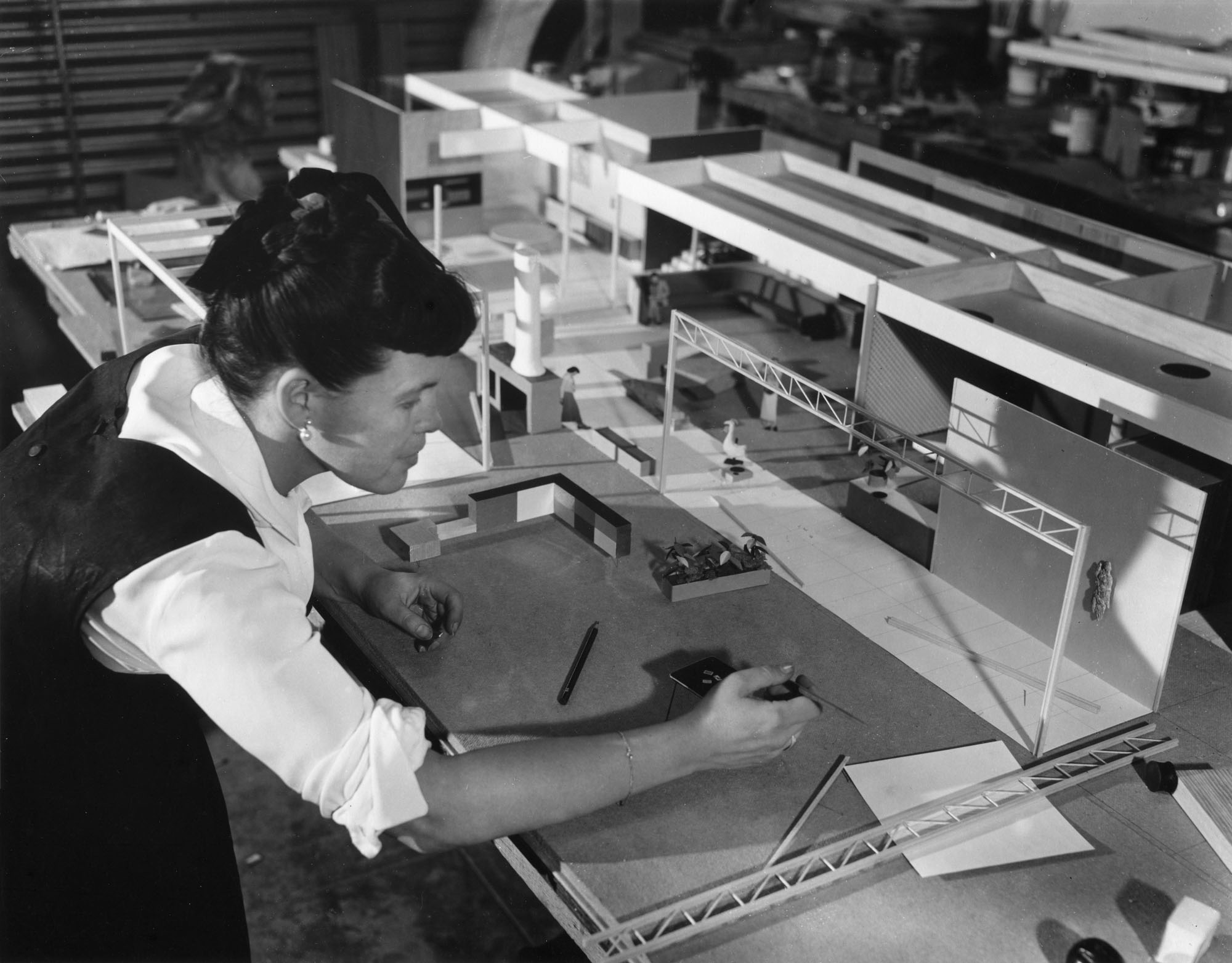
Profiles
The Eames Office Puts Ray Eames'south Design Contributions in Context
On the heels of the Eames Office'south 80th anniversary marked past an exhibition and a Ray-inspired sneaker, managing director Eames Demetrios spoke to Metropolis about the matriarch who continues to inspire design.
Source: https://metropolismag.com/projects/berkeley-art-museum-reengineered-mbh/
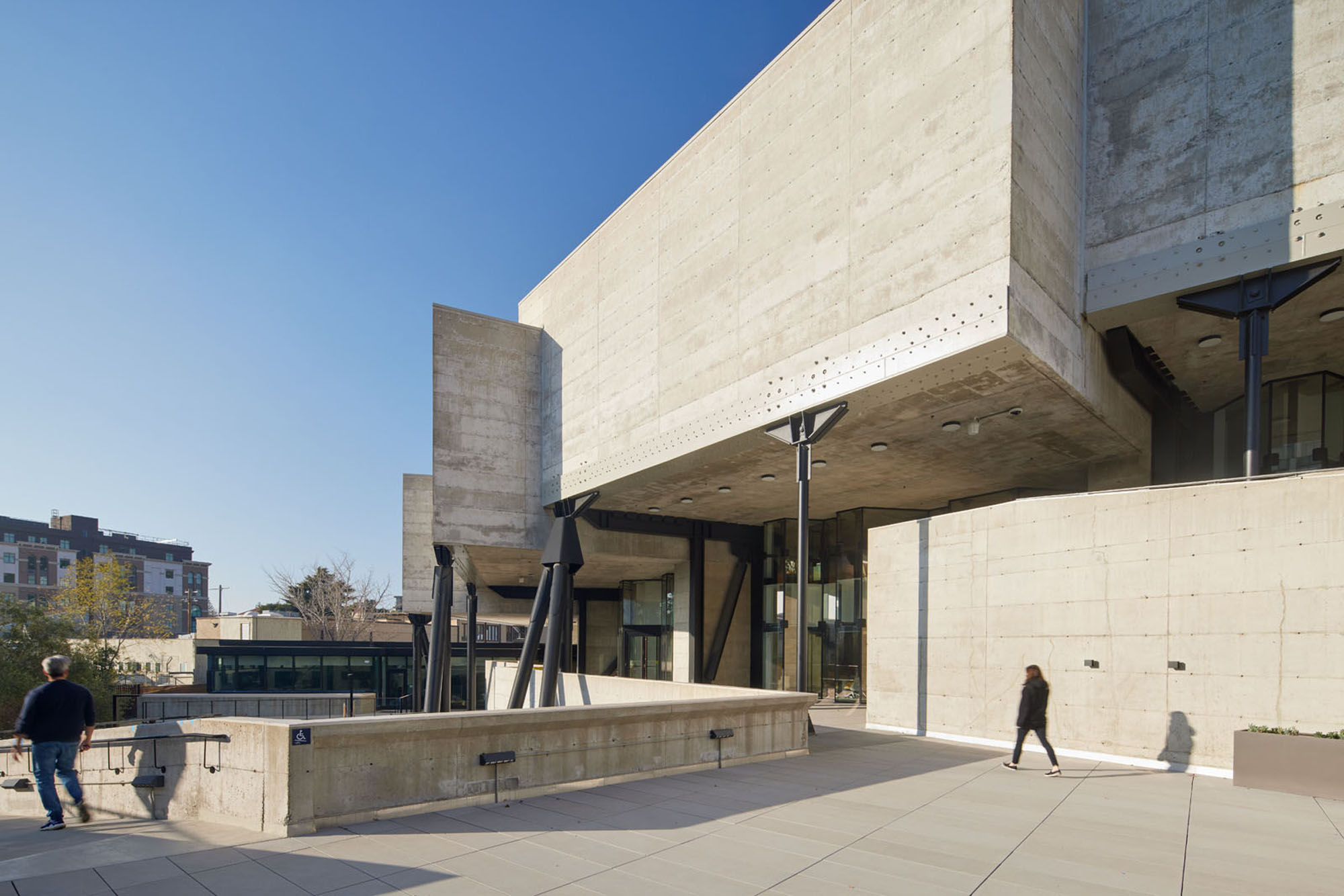
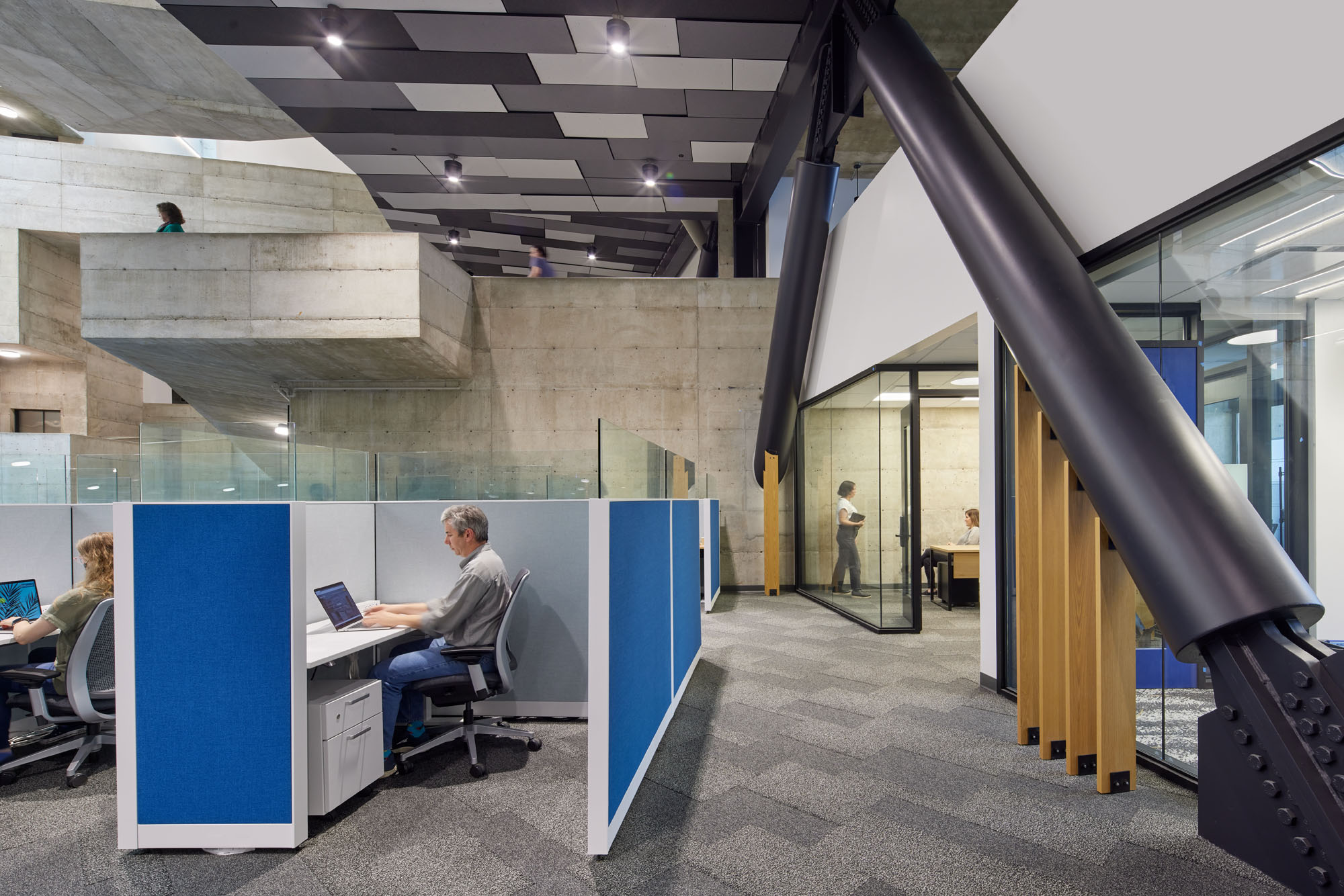
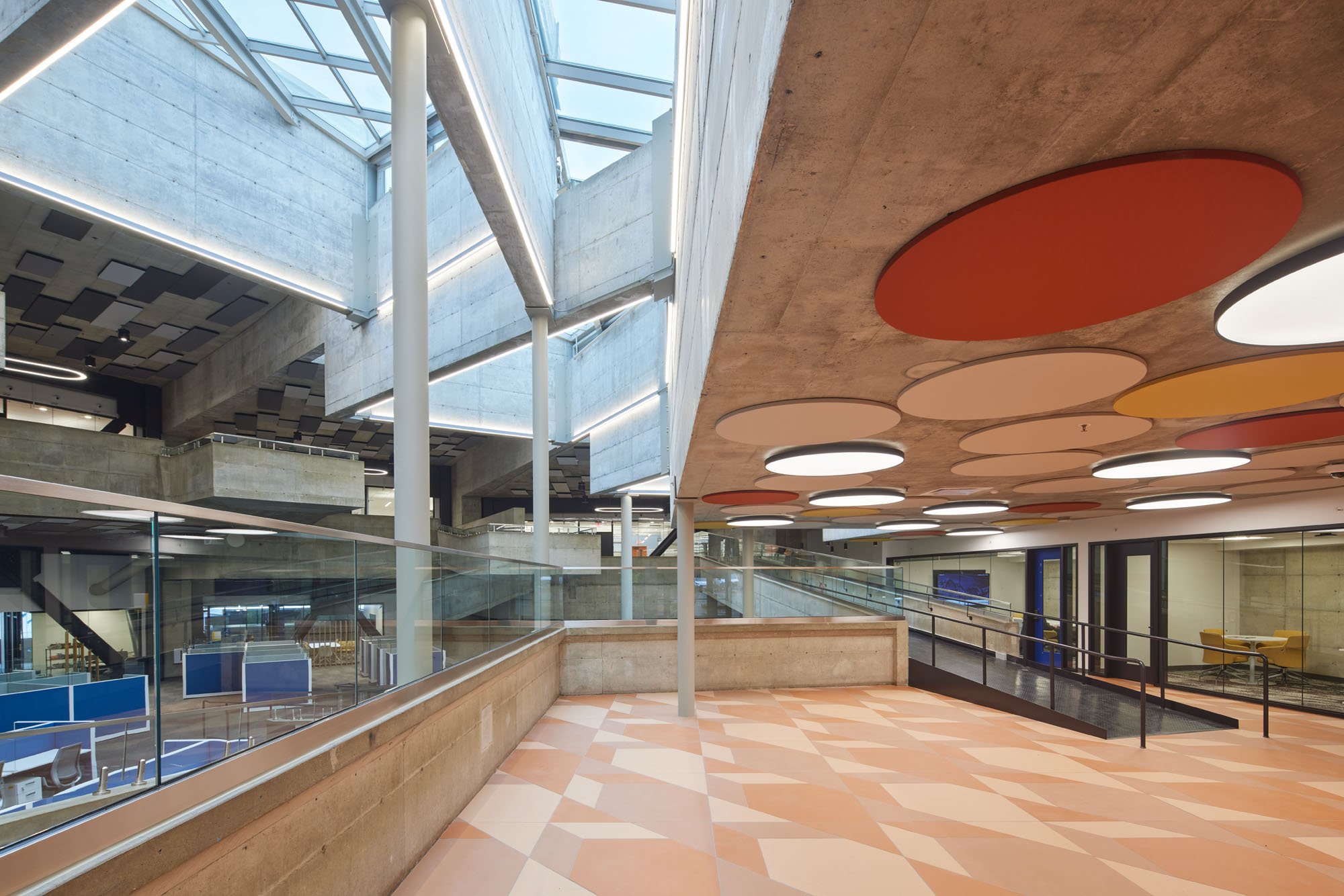
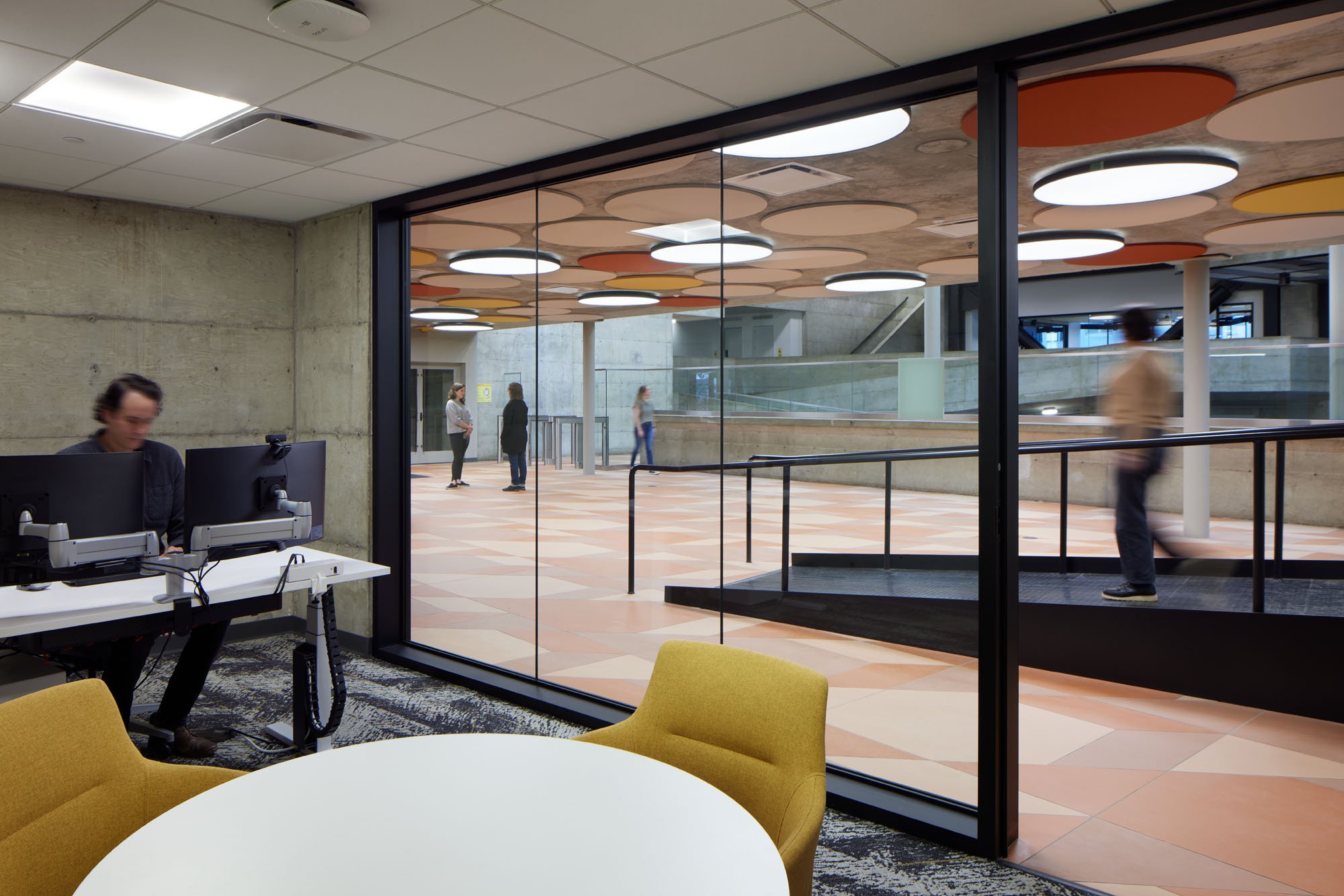



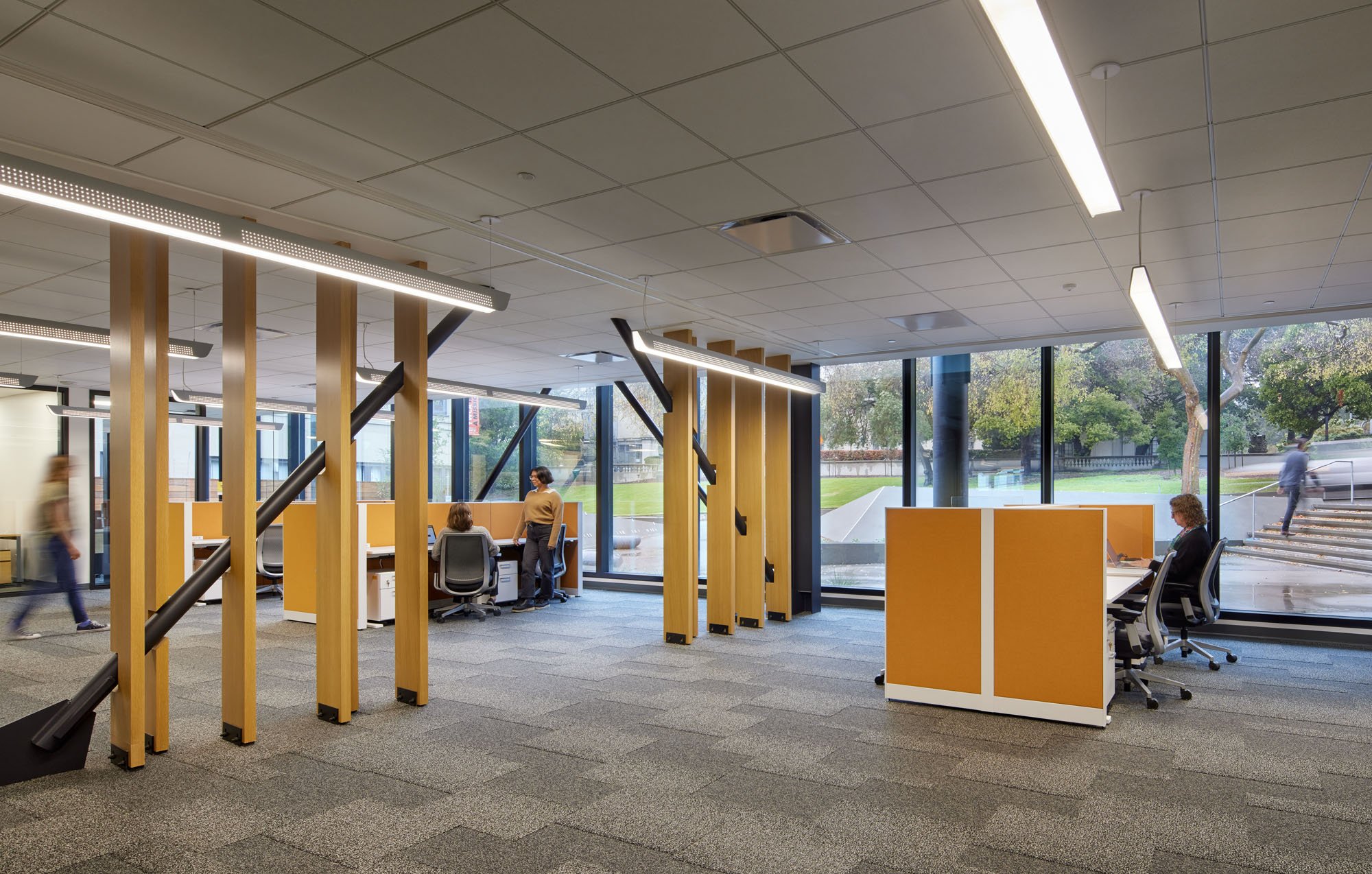
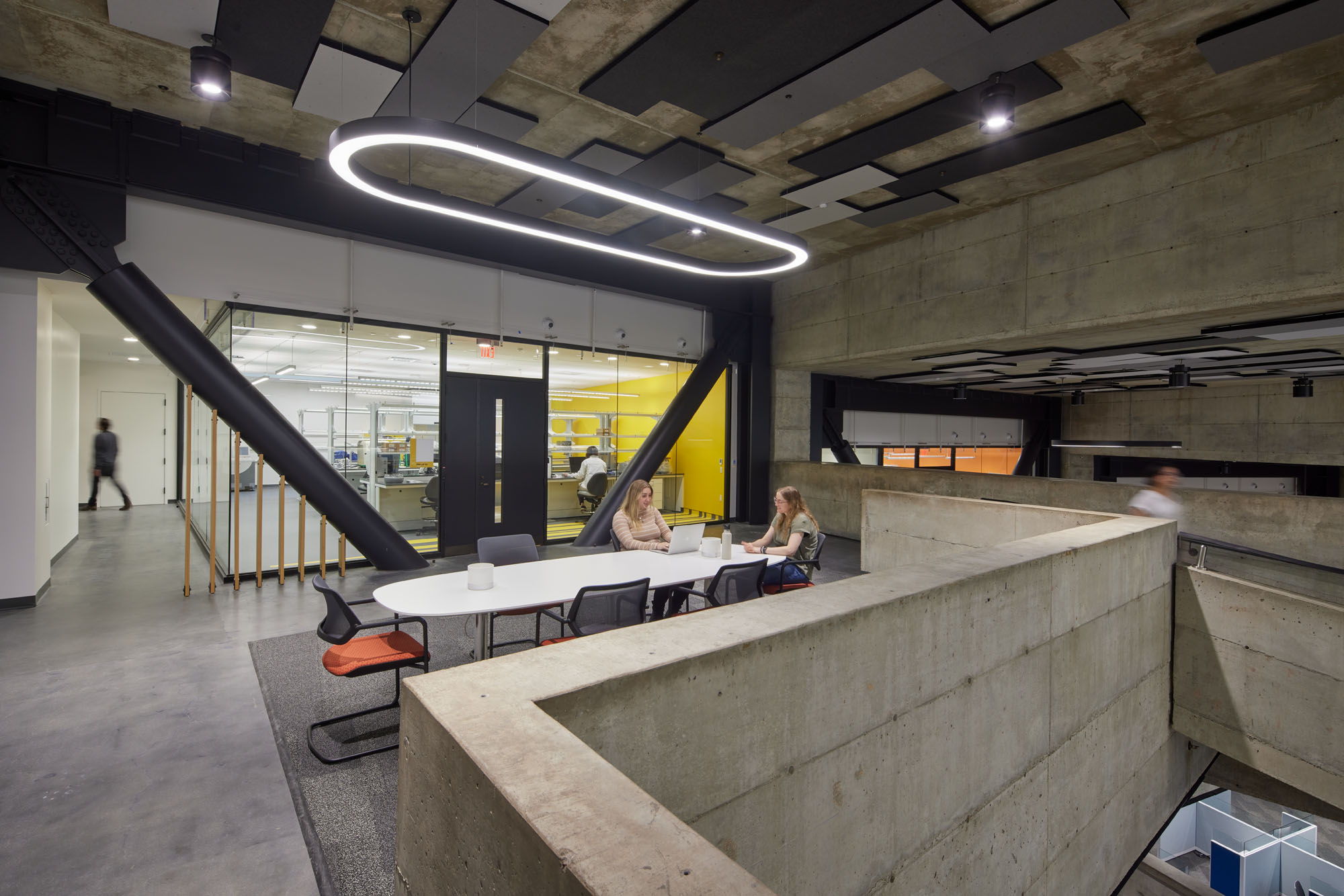

0 Response to "Brutalist Berkeley Art Museum Brutalist Berkeley Art Museum Wiki"
Post a Comment